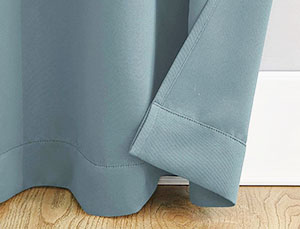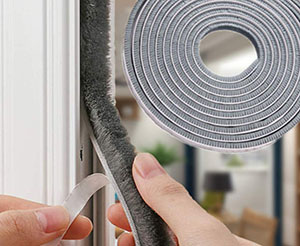Whether you want to improve energy efficiency, increase privacy, or keep your home comfortable, insulating your floor-to-ceiling windows is a great way to achieve your goals.
Insulating your floor-to-ceiling windows can also help to prevent drafts and moisture buildup, which can lead to dampness and damage to your home.
This article will teach DIY tips for insulating your windows, such as using caulk, weatherstripping, and draft stoppers.
How to Insulate the Floor to Ceiling Windows?
Insulating your windows can reduce energy bills and make your home more comfortable.
Choose the best method for you, and start saving energy today:
A. Seal Window Cracks with Silicone Caulk
One of the easiest ways to insulate your windows is to seal any cracks with silicone caulk. Start by cleaning the window frame and removing any old caulking or debris.
![]()
Apply the silicone caulk to the cracks and smooth it out with a caulk smoothing tool. Let it dry for at least 24 hours before painting or covering the window.
B. Install a Window Insulation Film
Window insulation films are a cost-effective way to insulate your windows.
Start by cleaning the window frame and applying double-sided tape around the edges.

Then, cut the film to size and apply it to the window, smoothing out any wrinkles or bubbles with a hairdryer. Trim any excess film with a utility knife.
C. Cover Windows with a Layer of Bubble Wrap
Bubble wrap is a cheap and easy way to insulate your windows. Cut the bubble wrap to size and spray the window with water.
Then, apply the bubble wrap to the window, with the bubbles facing the glass.
The water will help the bubble wrap stick to the window. You can remove the bubble wrap when the weather warms up.
D. Make a DIY Magnetic Vinyl Window Insulation
A DIY magnetic vinyl window insulation is a great option for a more permanent solution. Start by measuring the window frame and cutting the vinyl to size.
Then, attach the magnetic tape to the vinyl and stick it to the window frame. The magnetic tape will hold the vinyl in place and make it easy to remove when needed.
E. Install Thermal Curtains
Thermal curtains are a stylish way to insulate your windows. They are made from thick fabric and have a thermal lining that helps to keep the heat in.

Start by measuring the window and choosing a curtain that fits. Then, install the curtain rod and hang the curtains. You can also add a pelmet or valance to help trap the heat inside.
F. Install Tubular Rubber-Gasket Weather Stripping
Tubular rubber-gasket weather stripping is a great option for those who want to insulate the window frame. Start by measuring the window frame and cutting the weather stripping to size.

Then, apply the weather stripping to the window frame, pressing it firmly into place. The weather stripping will help to seal any gaps and prevent drafts.
What Window Modifications Can Help?
If you have floor-to-ceiling windows, you may have noticed that they can be a source of energy loss.
However, there are several window modifications that you can make to help insulate them and make your home more energy-efficient.
What is a Double-Paned Window?
A double-paned window, also known as an insulated window, is a type of window that has two panes of glass with a space in between them.
This space is filled with air or gas to help reduce heat transfer. Double-paned windows are more energy-efficient than single-paned windows and can help reduce your energy bill.

What is a Triple-Paned Window?
A triple-paned window is similar to a double-paned window, but it has three glass panes with two spaces between them.
This extra layer of glass and space can help reduce heat transfer even further, making triple-paned windows the most energy-efficient option. However, they are more expensive than double-paned windows.
In addition to double-paned and triple-paned windows, there are other modifications you can make to your floor-to-ceiling windows to help insulate them. These include:
- Installing energy-efficient window treatments, such as thermal curtains or shades.
- Applying window film insulation or caulking around the edges of the window to seal any gaps.
- Adding weatherstripping to the window frame to prevent air leaks.
- Using spray foam insulation fills gaps or cracks around the window frame.
This helps to lower your energy bill and reduce your carbon footprint.
Conclusion
In conclusion, insulating your floor-to-ceiling windows can help to reduce your energy bill and make your home more comfortable.
There are many ways to insulate your windows, including silicone caulk, window insulation film, bubble wrap, DIY magnetic vinyl window insulation, thermal curtains, and tubular rubber-gasket weather stripping.

